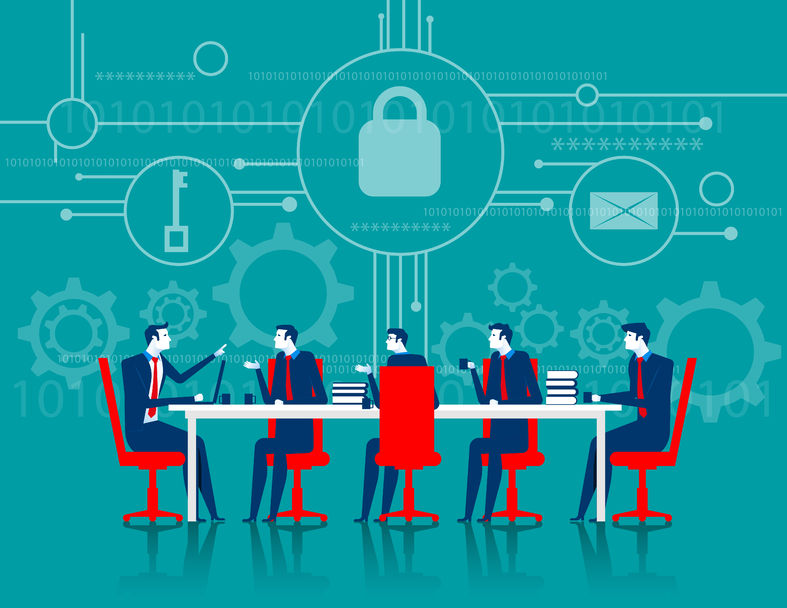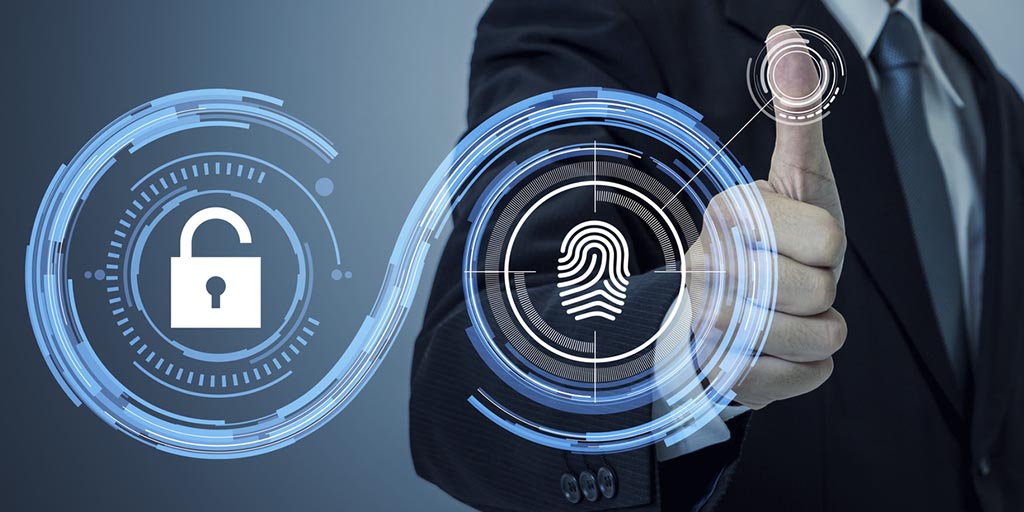
por Rebeca | Dic 8, 2021 | Noticias, Recursos, Soffid

There is no “one size fits all” when it comes to cybersecurity.
Over the last six months, we have seen an escalation in the number of reported cyberattacks, in their range, sophistication and in their long-lasting impact on businesses such as the Colonial Pipeline attack, and SolarWinds to name just two. These events obviously highlight the importance of having an effective cybersecurity strategy per organization, one size fits all because even if an organization undergoes such an attack, there should be company processes in place to mitigate the severity of the consequences. To do that, companies must monitor and be aware of the main existing security risks and effectively respond to these types of incidents as they occur.
Still, each organization is different in its make-up, business needs, productivity measurements and workflows. Each organization has different network architectures and software. There is no “one size fits all” when it comes to cyber security.
CISOs
Security teams are usually aware that they need to identify the cyber risks most likely to affect their own business’ smooth running and build a security infrastructure aligned with the company’s risk tolerance level. But that is easier said than done.
Even now, with everything that has occurred, many enterprises do not prioritize personnel and budgets for this purpose, often leaving the CIO or CISO and her/his team to “fend” for themselves. Without the appropriate resources and without full company involvement and support, that is a very tall order.
In addition to organizational support, with the plethora of different approaches and tools, identifying the optimal security path requires adopting proactive and scalable methods and the ability to prioritize the different types of cyber threats.
Whether you obsess about cybersecurity every day or you are completely new to the process, there are certain things that you should consider to make your company’s cybersecurity strategy successful. In this post, we’ll reveal five elements you should include in your strategy, regardless of whether you are the sole proprietor of a brand new business or looking to transform the security posture of a large, well-established organization.
-
-
Understand the difference between compliance and security.
In any instance where your company collects personal information or data as part of your relationship with your customers or vendors, you have an ethical if not legal obligation to be a responsible steward of that data. It is not enough to say “we won’t share your personal information” or be able to produce required audit reports if asked, because that’s not really security. The first step to creating a security strategy is knowing what data you collect, where it’s stored, who has access to it, and why. This enables you to establish what is “normal” data use for your organization and makes it much easier to see when someone is trying to steal it.
-
Make data security everyone’s responsibility.
Forrester Research recently reported that 80% of security breaches involve privileged credentials. That means an insider either unwittingly or with malicious intent exposed their credentials, and likely sensitive personal data, to a cyber-criminal. Another pillar of a cybersecurity strategy should be educating employees on the fundamentals of how to proactively limit exposing their credentials. This can be as simple as asking people to log out of sensitive databases when finished with them or helping them identify a likely phishing attack. An organization like the National Cyber Security Alliance offers great resources to get you started. It’s also important to consider data access control issues. With the right technology, organizations can apply role-based user privilege access control rules to align individuals; privilege levels with the actual requirements of their job function. Not just once, but on a continuous basis.
-
Account for the roles of your cloud vendors and ISPs.
Organizations large and small share sensitive data with cloud-native architectures for a myriad of reasons. AWS’ very useful Shared Responsibility Model explains; very well that cloud vendors provide secure architectures in which their customers can store data; but it’s the customer’s responsibility to apply their security policy to the data. This detail seems to be lost on the vast majority of organizations. Gartner reports that at least 95% of cloud security failures until 2022 are predicted to be the customer’s fault.
Part of your security strategy should be working with all your cloud-native vendors to ensure that their environments. Many retail and services organizations use ISPs to host their websites. They depend on their ISPs to keep their websites up and running regardless of traffic levels.
If your website were ever subject to a Distributed Denial of Service (DDoS) attack; an incident whose sole purpose is to make your website and servers unavailable to legitimate users; you could be facing an existential threat. In many instances, to ensure the other websites they host are not subject to diminished performance. One size fits all an ISP will simply shut down a website under a DDoS attack until it stops. Part of your security strategy needs to account for DDoS attacks and have a solution in place to disperse; illegitimate web traffic without shutting down your website and ensure real customer traffic reaches your organization.
-
Have a plan for if you are breached.
In spite of best efforts, breaches happen and your data security strategy needs to account for what happens next. You should have a disaster recovery plan in place to secure your network; prevent further damage and identify the breach source as well as inform stakeholders and law enforcement. The plan should turn the incident into a positive by ensuring knowledge gleaned.
While these elements are essential, they are not all you need. We strongly recommend working with cybersecurity experts to accurately evaluate your specific threat landscape; and help you build a sustainable data security strategy for today and the future.
Today’s hyperconnected and decentralized workforce maneuvers within dynamic network; architectures and programs that have moved to the edge and the cloud. Therefore any effective cyber defense strategy must start with open communication between the CIO/CISO. One size fits all security teams, and company executives.
This open line of communication is especially important since 2020.

one size fits all
With the increased number of employees working remotely, security officers face the added challenge of providing remote workers with additional layers of security, as the organization is more exposed to cybercriminals.
Integrating business operations with security personnel helps employees understand security better. It also allows cybersecurity professionals to consider the organization’s business strategy and priorities. While establishing cyber security policies and managing cyber risk solutions and monitoring.
Additionally, establishing the following core security principles and policies empowers the CIO/CISO; to focus both on individual applications and the broader company infrastructure.
Sources:
(1) Security Boulevard
(2) CIO.com
(3) The World Economic Forum
Picture: <a href=’https://www.freepik.es/fotos/negocios’>Foto de Negocios creado por rawpixel.com – www.freepik.es</a>

por Rebeca | May 26, 2021 | Ciberseguridad, Recursos, Soffid
Imagine this scenario about Future Trends in Access Management… – If you are the CEO of a mid-sized organization with branches in different continents and three thousand employees, how efficiently could you monitor logins? Perhaps, on a bad day, an employee would have lost their Smartphone or lost the paper in which they wrote the password.In such a case, would you identify that one illegal or criminal login from all the 3000 logins that day?
In this scenario, we are yet to find a universal solution to manage online identities in both the government and the private sector.
Since the IAM space is continuously evolving
Organizations identify new trends in Identity and Access Management to minimize data-breaches, meet regulatory requirements, and manage user identities to the utmost extent.

Years of data breaches stemming from credential theft, attacks targeting privileged user accounts and poor password practices have led to a major evolution in identity and access management technology designed to protect enterprise data.
Five IAM trends are addressing the need for greater user account and network protection.
Identity and Access Management (IAM) has the attention of cybersecurity professionals around the world. The identity and access management market growth has roughly quadrupled over just the last three years, and shows no signs of slowing down any time soon.
The COVID-19 pandemic has raised the visibility of identity & access management (IAM) due to the high priority in getting remote access secured and the increased protection needed around digital transformation initiatives.
In an effort to make organizations more secure, agile and resilient, IAM leaders must improve governance and strengthen privileged access management (PAM) practices to prevent breaches, establish more robust and agile authentication and authorization, and enhance consumer IAM to prevent fraud and protect privacy.
In this rapidly changing business scenario, here are upcoming trends that promise to revolutionize the IAM sector:
1) Adapting Biometrics
As per Global Market Insights, the global biometric market would reach an estimated value of USD 50 billion by the end of 2024. Perhaps one of the rapidly emerging trends in the IAM sector, biometrics like retinal scans, facial recognition systems, and fingerprints, is highly preferred for ensuring authorized users in networked systems.

To counterbalance this threat, the future trend would involve IAM, which relies on biometric data, to get an additional layer of security for protecting the biometric information.
2) Blockchain and Future Trends in Access Management
Blockchain offers features like transparency, reliability, and integrity, making it a popular choice for ensuring data protection with both public and private sectors.
While talking about Blockchain in the context of IAM; the two aspects, the come into play are – Audit trail and self-sovereign identity. Self-sovereign identity is the concept of an individual protecting their entire identity as their personal property rather than let an organization or third-party provider manage it. By keeping the individual’s information protected by encryption in a permanent blockchain across a distributed network system, this concept offers complete individual control over their identity data.
Through the Self-sovereign identity system, the idea is to replace centralized; identity providers and instead let each individual take control and decrypt the data only when required.
Audit trail, a user’s entire login history, access request, permission grants, changes performed, or engagement is recorded. This is helpful for an organization in monitoring activities, detecting fraud, and also meets compliance requirements.
3) Single Sign-On Systems and MFA
While MFA is one of the most popular IAM practices, there is still plenty of scope for its improvement; as data breaches still occur and cause substantial revenue losses. Adaptive Authentication is the advanced version of MFA. Which relies on machine learning capabilities to detect } user behavior or illegal entry.
Adaptive Authentication pulls in all the details of user login in terms of login time. Device, location, browser, and other data, which helps analyze a login attempt’s authenticity. Based on the analysis, if a login attempt turns out to be fishy. The system will ask the user to fill in an MFA to be authenticated.
Another popular IAM industry trend is Single Sign-on (SSO System) usage with MFA. That helps users leverage a unified, singular set of credentials to gain access to networks; data, applications, web, and the cloud.
4) IAM and the Internet of Things (IoT)
With the arrival of the Internet of Things (IoT), there is a massive requirement for Identity Access Management service. Whenever an IoT based device is added to a network, there increases the need to mitigate security risk.
Hence, the current priority is to ensure secure identity access management. On these IoT devices for restricting the entry of hackers into the network. Devices that can pose a threat could feature smart TVs, security cameras, and smart bulbs.
Another technology that could prove to be a breakthrough is working on IAM systems. Which require the system to authenticate a user’s access through numerous devices.
Also, in numerous cases, securing IoT devices would be achieved by embedding; the device identities in the processing chip and being an integral part of the hardware.
5) Artificial Intelligence in IAM
An aspect of Identity Management, Context-based identity, also is responsible for comparing data about. This data includes numerous behavioral patterns like physical location, IP address, usage, preferences, and machine address.
Leveraging AI programming algorithms for data mining helps discover data patterns. That are extremely helpful in reducing fraud and identifying risks. This technique has been highly useful in banking systems across the globe.
6) Identity Access Management for Cloud Services
Since the cloud is in great demand, organizations have been shifting to cloud. Services to provide advantages such as efficiency, scalability, and flexibility.
Namely, Access Management, Identity Management, Access Governance, and PAM. We help you elevate your organization’s goals towards digital transformation and help develop data strategies. In line with revenue maximization and achieve customer satisfaction.
(1) Gartner
(2) Search Security

por Rebeca | Mar 11, 2021 | Sin Categoria
A compliance audit is a comprehensive review and evaluation of a business or organization’s compliance with a voluntary compliance framework (e.g., SOC 2) or a regulatory requirement (e.g., GDPR). The scope of a compliance audit depends on which framework/regulation the auditor is evaluating against and, for some frameworks, what type of information the organization stores and how they utilize it.
Many companies still do not appreciate the interconnection of security and compliance. Both are often considered cost centers, and that paints a scowl on the face of many Chief Financial Officers. However, there is a different way of looking at compliance (or its negative counterpart, non-compliance).
We can divide compliance into the categories of obvious and not-so-obvious costs.
The obvious costs are easy to understand:
- Track – Keeping a close watch on the requirements to maintain compliance
- Mitigate – Correcting any deficiencies
- Fines – Monetary penalties for compliance failure
Some of the hidden costs include:
- Additional internal audits – To verify that everything is in order as well as the costs of reworking
- Business disruption – Due to a regulator lockdown of a business unit or the entire organization,
- Productivity loss – The time employees need to focus on remediation
- Brand loss – Due to bad media coverage, and this leads to customer erosion
These costs ensure that your organization is equipped with the correct resources that are required to maintain and confirm there are no compliance slips. The biggest hidden cost, though, is the loss that is not accounted for due to non-standardized operating procedures and a lack of standardized control.
In information technology, this is known as secure configuration management. An organization may be operating at lower efficiency without being noticed until regulatory compliance audits unravel the cracks in the IT ecosystem. This is the “close to broken” setting mentioned earlier.
Fortunately, the journey to compliance need not be a burdensome task. For example, in the banking industry, digital checking mechanisms enable institutions to track all the risks and ensure compliance by applying the appropriate controls. Comprehensive dashboards are used to ensure that banks can effectively monitor and mitigate compliance issues before they cross into non-compliant territory.
To reduce business risk by ensuring systems are properly configured or hardened to meet with your internal regulatory and legislative compliance standards, Secure Configuration Management is a must.
A secure configuration management tool combines network monitoring and Endpoint Protection methodology to compare monitored systems against an approved configuration baseline or a golden image. Deviation from this baseline, known as test failures, can usually be corrected with little or no human intervention. Secure configuration management is truly a need-to-have based solution.
Secure configuration management offers benefits to organizations, not only from the cost-avoidance standpoint of non-compliance but also from increased organizational efficiency and agility.
Attacks
It is important to note that while many vulnerabilities are “common,” there is a more critical aspect of maintaining compliance to protect your organization. The largest segments of attack types are targeted. This type of attack means your organization is singled out, and the attacker has a specific interest in your business or your intellectual property.
A targeted attack takes time and planning, sometimes months, to lay the groundwork and prepare. Attackers still use commodity techniques to probe the systems in your organization, looking for the best path to exploit, but their methods are specifically tailored to your infrastructure, your processes and your personnel. The main reason that targeted attacks are effective is because organizations struggle to follow basic security practices and properly institute measurable security policies.
Could you imagine how much less risk your organization would have if you could eliminate 99.99% of attacks?
How Soffid Can Help
Soffid makes compliance to security standard easier with the broadest set of compliance and security policies that accelerate securing your infrastructure and knowing where the weak points are. We update these policies as standards change and allow you to customize the test and assessment results to better meet your individual needs, as you get a giant head-start on your security policy and framework as well as the flexibility to make it your own.
Sources:
(1) Security Boulevard
(2) Forbes








